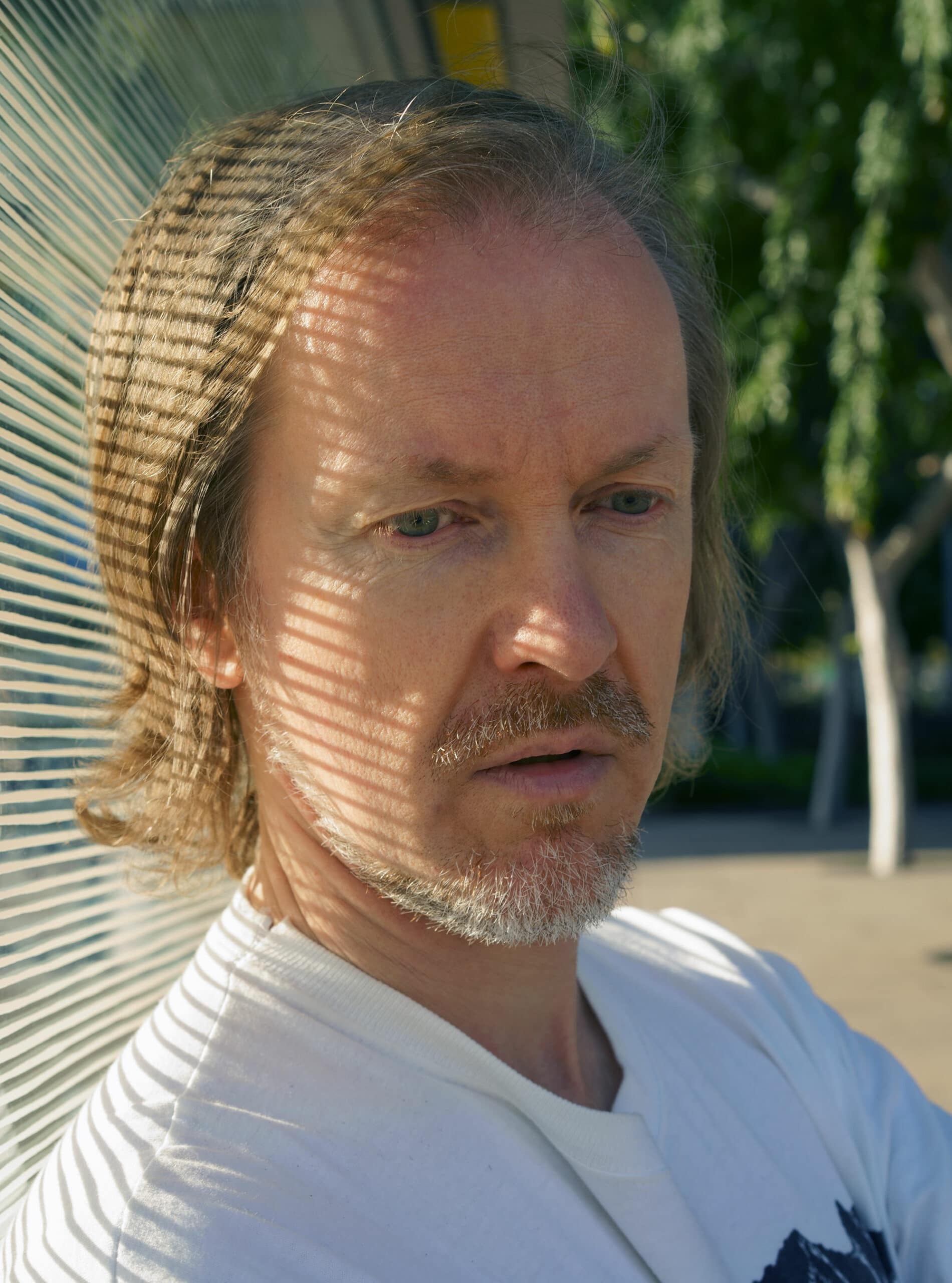
Torbjørn Rødland
Norwegian artist Torbjørn Rødland has in later years lived and worked in Oslo, New York, Berlin, and Los Angeles. Among contemporary Norwegian artists, Rødland is one of the biggest names internationally. His chosen media are photography and video, and he has worked with everything from still life, landscape, and nude portraits to double-exposure and abstract photography. Rødland brings the beauty in the seemingly trivial clearly to the fore, and he seeks out potentially meaningful material not normally taken seriously. Silence, mystique and unease make their presence felt in his photo series of otherwise banal motifs such as sunsets, pets and beautiful young people. In the early 1990s Rødland established his position as a central figure in the breakthrough of photography as an art form in Norway. As part of the “Bergen wave” of artists that included Mikkel MacAlinden, Ole Johan Aandal and Vibeke Tandberg, he was very familiar with the US Pictures generation, the critical “appropriation photographers” of the 1970s and 1980s such as Sherrie Levine, Cindy Sherman and Richard Prince. Rødland has, however, distanced himself from the often ironic attitude to life of his generation and seeks to challenge the notion that an authentic experience is no longer possible. In contrast to the works of the Pictures generation, his own works are not intended to decode pictorial conventions but rather to retain the onlooker in the process of observing. In Rødland’s first known photo series, In a Norwegian landscape, begun in 1993 while still a student at the Bergen Academy of Art and Design, he took portraits of himself in various landscapes, usually with his back to the camera as he enters the forest carrying a supermarket bag. Since then, he has also photographed priests, nudists, police and black-metal artists in Norwegian landscapes. The pictures are imbued with a feeling of paralysis and passivity. A typical motif is attractive female models striking awkward poses while staring enigmatically into the middle distance with a mix of the sweet, the mildly erotic and the stupid. This “beauty strategy” endows the photographs with an extraordinarily melancholic atmosphere. In Rødland’s works one recognizes elements from amateur photography, photojournalism and popular culture. The authenticity of the documentary photograph’s sharpness and objectivity is undermined by an aesthetic that one tends to find in commercials and fashion and lifestyle magazines. The grandiose aspect and the seductive effect that such pictures seek to arouse is, however, lacking. Impressive mountain landscapes therefore appear flat, and the opulent charms of the naked models appear asexual. In many ways they seem unable to speak. Rødland has called these “perverse photos” – photos that refuse to fulfil their function or communicate a message, whether commercial or documental. He seeks to void the photo of all ideological or instrumental utilitarian value. What happens, for instance, with a photo that could potentially have sold a product but fails to do so? Can one in this way achieve genuine contact with the world? Rødland represents a type of photography that understands that memory and culture form an integral part of seeing. Youth, nakedness and romantic landscapes are part of the mass media’s communication strategy. Naivety is attractive, but essentially impossible. He concerns himself with the photographic construction of the world and plays on the public’s own mental picture archive and the visual clichés and conventions familiar to us all. And amid this staged naturalness, something that is essentially beautiful is retained. The photographs vary between the genuine and the superficial, between seriousness and irony. And above all, they are imbued with the essential ambiguity of Rødland’s balancing act between the dark and the sugar sweet.